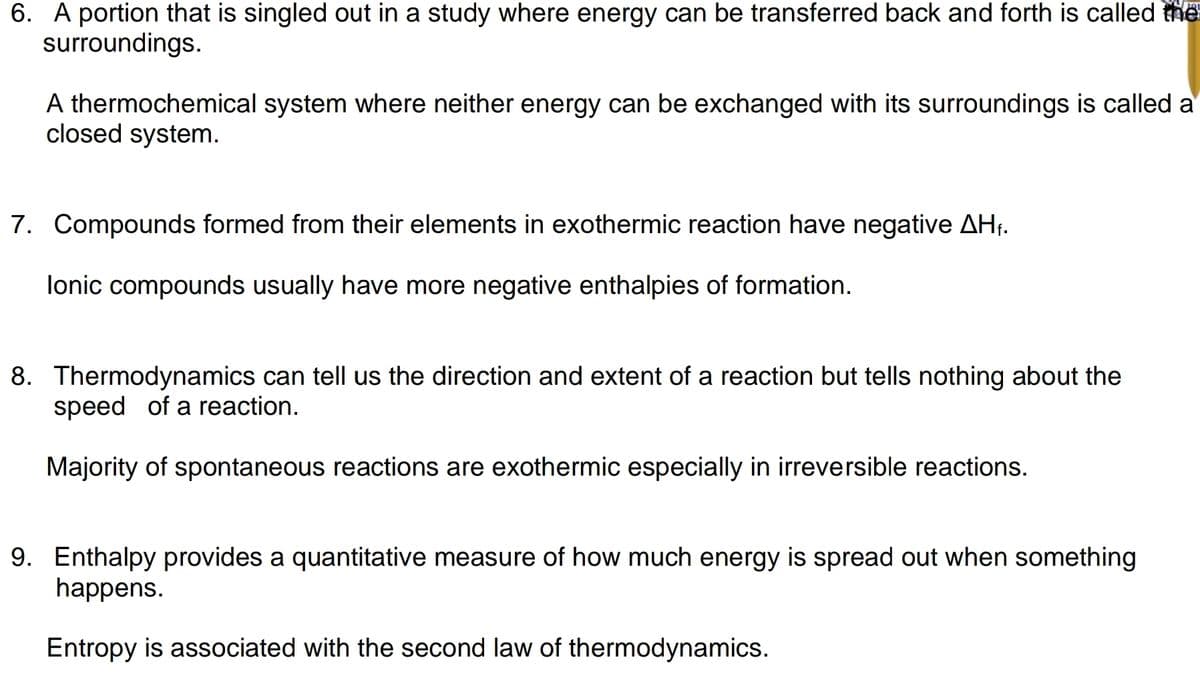6. A portion that is singled out in a study where energy can be transferred back and forth is called he surroundings. A thermochemical system where neither energy can be exchanged with its surroundings is called a closed system. 7. Compounds formed from their elements in exothermic reaction have negative AHt. lonic compounds usually have more negative enthalpies of formation. 8. Thermodynamics can tell us the direction and extent of a reaction but tells nothing about the speed of a reaction. Majority of spontaneous reactions are exothermic especially in irreversible reactions. 9. Enthalpy provides a quantitative measure of how much energy is spread out when something happens. Entropy is associated with the second law of thermodynamics.
Thermochemistry
Thermochemistry can be considered as a branch of thermodynamics that deals with the connections between warmth, work, and various types of energy, formed because of different synthetic and actual cycles. Thermochemistry describes the energy changes that occur as a result of reactions or chemical changes in a substance.
Exergonic Reaction
The term exergonic is derived from the Greek word in which ‘ergon’ means work and exergonic means ‘work outside’. Exergonic reactions releases work energy. Exergonic reactions are different from exothermic reactions, the one that releases only heat energy during the course of the reaction. So, exothermic reaction is one type of exergonic reaction. Exergonic reaction releases work energy in different forms like heat, light or sound. For example, a glow stick releases light making that an exergonic reaction and not an exothermic reaction since no heat is released. Even endothermic reactions at very high temperature are exergonic.
Answer number 6 to 10 pls. and follow the instructions on the first picture.


Step by step
Solved in 4 steps









